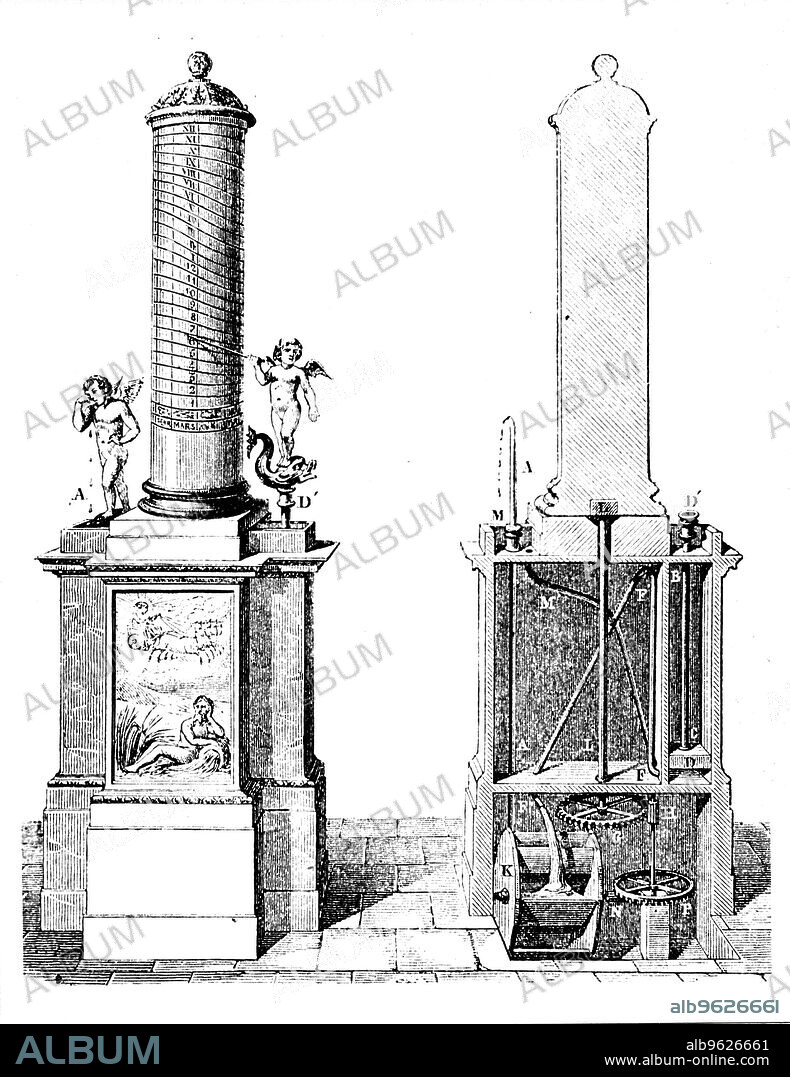alb9626661
Reconstruction of a clepsydra (water clock), invented by Ctesibius of Alexandria, c270 BC (1857). Artist: Unknown

|
Zu einem anderen Lightbox hinzufügen |
|
Zu einem anderen Lightbox hinzufügen |



Haben Sie bereits ein Konto? Anmelden
Sie haben kein Konto? Registrieren
Dieses Bild kaufen

Titel:
Reconstruction of a clepsydra (water clock), invented by Ctesibius of Alexandria, c270 BC (1857). Artist: Unknown
Untertitel:
Siehe automatische Übersetzung
Reconstruction of a clepsydra (water clock), invented by Ctesibius of Alexandria, c270 BC (1857). Ctesibius (fl270 BC) was an inventor and mathematician who initiated a tradition of great engineers in ancient Alexandria. None of his writings have survived, and his inventions are only known about from references to them made by others. This clock worked by water dripping at a constant rate and raising a float with a pointer. It was only superseded in terms of the accuracy of its timekeeping in the 17th century when Christiaan Huyghens showed how the pendulum could be applied to clocks
Technik/Material:
engraving
Bildnachweis:
Album / Ann Ronan Picture Library/Heritage-Images
Freigaben (Releases):
Model: Nein - Eigentum: Nein
Rechtefragen?
Rechtefragen?
Bildgröße:
2841 x 3684 px | 29.9 MB
Druckgröße:
24.1 x 31.2 cm | 9.5 x 12.3 in (300 dpi)
Schlüsselwörter:
 Pinterest
Pinterest Twitter
Twitter Facebook
Facebook Link kopieren
Link kopieren Email
Email
